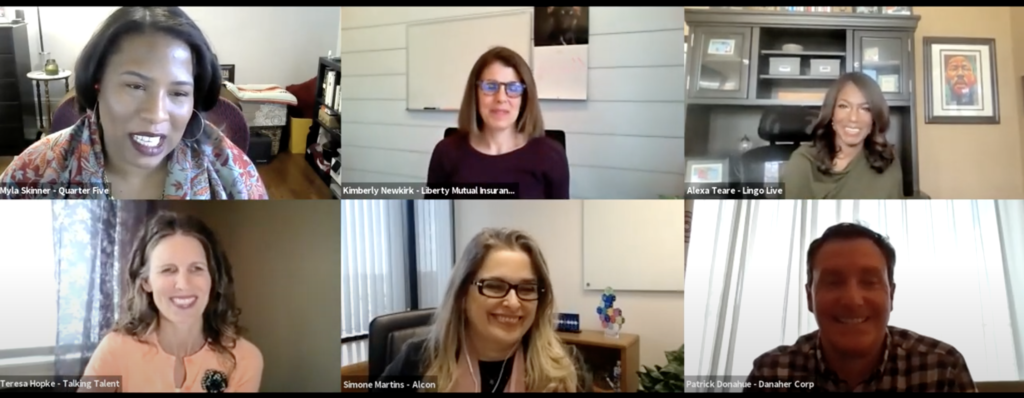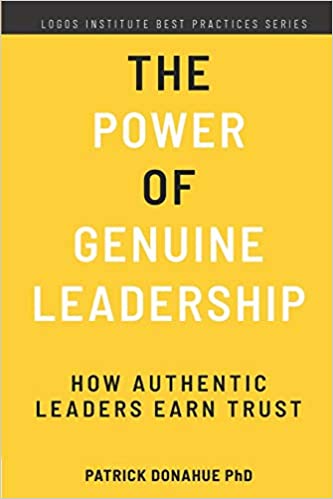How We Can Develop More Authentic Leaders


When Teresa Hopke, CEO of the leadership-coaching consultancy Talking Talent, coached a group of 50 women–all the highest performers in their organization–she found a startling commonality. “They all showed up with confidence issues,” she recalled. “They thought they were the only ones who had somehow been wrongly selected for this program.”
As the women began to talk and relate over shared experiences, “they all realized they had this human connectedness around their vulnerabilities, which allows us to be authentic,” Hopke said. The experience spoke to the power of bringing authenticity into leadership development. “Somewhere along the way in Corporate America, we took a wrong turn in thinking that being buttoned up and polished, being prepared, having notes and always being on top of your game was the way to win,” as Hopke put it. “That’s something we coach people around a lot–get rid of their perfectionism, get rid of their imposter syndrome.”
Hopke was one of five experts in a conversation led by Myla Skinner, the founder and managing partner of the consulting firm Quarter Five, about how to promote authentic leadership in the workplace. The panel was a part of From Day One’s March conference on how to develop authentic leaders and the role of HR in the process.
As Skinner put it at the top of the discussion, “we have literally torn down the walls between our personal and professional lives” given the last year of Covid-19. “This is such a critical time, for that reason, to talk about authenticity and promoting authenticity within our work.”
The panelists then discussed what authenticity is, what it’s not, and the best ways to practice and encourage it in the workplace. Alexa Teare, chief people officer of Lingo Live, a coaching firm focused on communication, summed up the quality this way: “It’s less to do with authentic leadership and more to do with authenticity at the core: self-authenticity, self-reflection and self-awareness.”

In that vein, authentic leadership doesn’t have to look any one, specific way. “As HR professionals, we’re often inundated with information about what a leader is,” Teare said. “From my perspective, it looks like there can be dissenting views. An authentic voice for myself may be different than [others]. A workplace can foster individual authenticity and healthy collaboration between colleagues, without forcing a specific vision of “authentic leadership.”
Patrick Donahue, VP of leadership development and learning for Danaher Corp., a global science and technology company, affirmed Teare's assertion that “authenticity starts with self-awareness.” He also pointed out what the quality is not. “There are some limits to the notion of ‘bring your whole self to work every day, every hour.’ And we shouldn’t make authenticity an excuse for not-necessarily-good leadership behavior,” said Donahue, who is also the author of The Power of Genuine Leadership: How Authentic Leaders Earn Trust.
Panelists had suggestions on how to create a workplace environment to foster real authenticity. Kimberly Newkirk, chief learning and talent officer for Liberty Mutual Insurance, shared how the company developed Guidelines for Inclusion that included 12 everyday habits, including “step up and then step back.” Newkirk said that “they became actual habits in the company that people cite all the time. Three years later, they have become a sort of common language.”
To build off that work, Liberty Mutual co-developed a foundational leadership program that emphasizes diversity and inclusion. “It really goes into the neuroscience behind threat and reward, how to think about yourself in that,” Newkirk said. The goal, she added, is to provide a foundation for self-awareness and reflection in leadership.
Simone Martins, head of HR for the vision company Alcon, advised leaders “to focus on the purpose.” She also said a company’s management needs to develop a sense of True North, “where you want to go and what is your purpose. That’s where we start to develop the authentic leadership environment in the organization.”
Another factor the panelists aligned on: They agreed that when authenticity comes from top leadership, it has a trickle-down effect. “Executive storytelling is so powerful,” said Donahue. “It’s amazing how many people at the mid-level will say, ‘Wow, that person is human and I can be too.’”

Consistency as a leader emerged as another important component. “It’s not about showing up in one way on Monday and a different way on Thursday,” said Teare. “It’s about being consistent in the way you’re leading. It’s turning credibility into reliability, and then into integrity.”
There are still risks with prioritizing authenticity in the workplace. “It can fail, like anything,” Martins noted. “The critical issue is that we have self-awareness. The more we know about ourselves, the more we can get better and work close with others to help them succeed.”
Knowing how much to share about oneself in a workplace setting can be tricky. “Authenticity isn’t you sharing your deepest, darkest secrets in a way that’s not helpful or well-received by the other person. It doesn’t have to mean you bare all,” Newkirk said. “It means you show up, you’re not trying to keep up a facade, and you understand when and where it’s appropriate to share.”
The risks, the panelists agreed, are worth it. “Embrace the journey,” as Teare urged. “There’s been no more important time for authenticity than now,” said Newkirk. “If there’s one thing we can get right in 2021, it should be this idea of authentic leadership in workplaces and supporting people in the way they need to be supported.”
Emily Nonko is a Brooklyn, NY-based reporter who writes about real estate, architecture, urbanism and design. Her work has appeared in the Wall Street Journal, New York magazine, Curbed and other publications.
The From Day One Newsletter is a monthly roundup of articles, features, and editorials on innovative ways for companies to forge stronger relationships with their employees, customers, and communities.